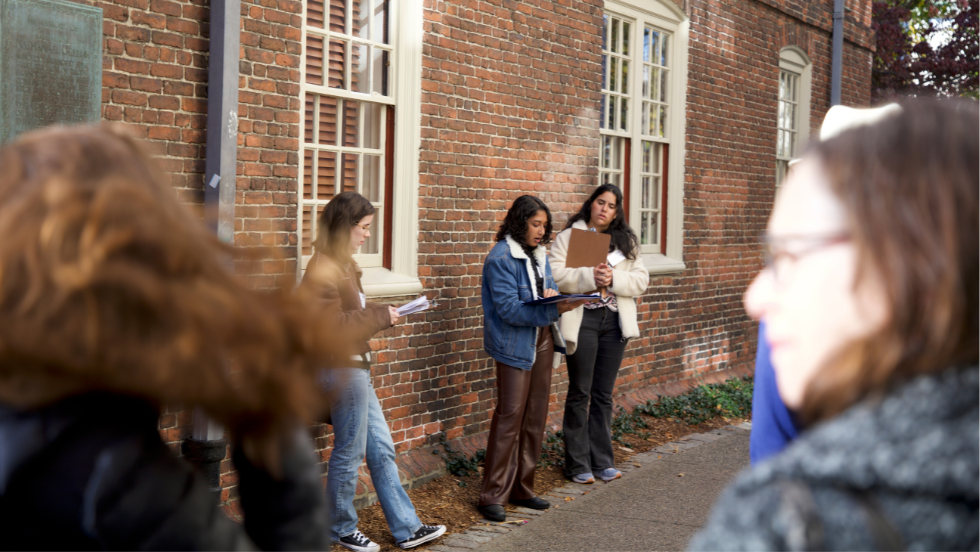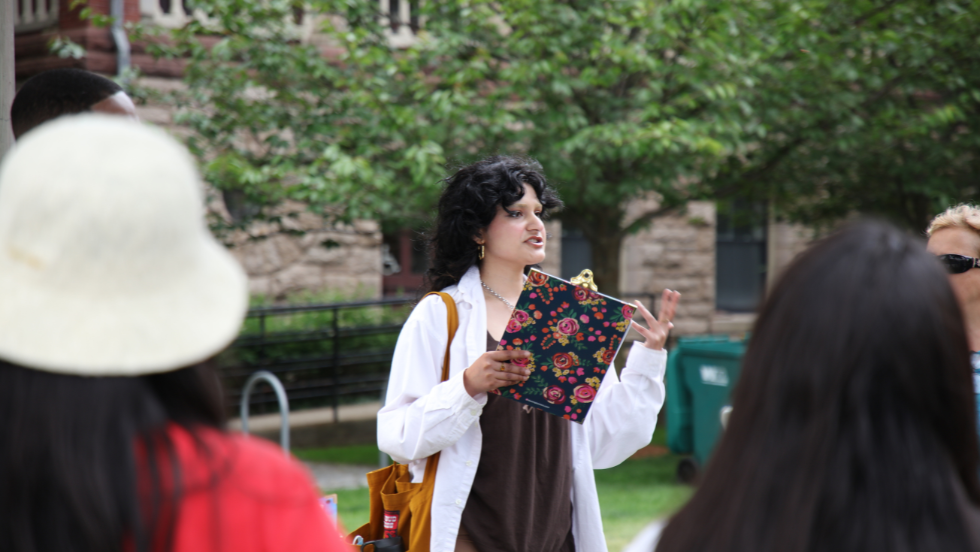2023 Annual Report Update: Graduating Seniors
Slavery and Legacy Walking Tour Guide Reflection

Credit: Desiree Obimpe
As a guide for the Simmons Center’s Slavery and Legacy Walking Tour, I found space for a more detailed exploration of Brown's histories of racial violence, as well as the opportunity to share these histories with Brown students, staff, Providence community members, and middle school students visiting campus. I was excited to build accessible and engaging public education around the university's participation in racial slavery and colonialism, especially since my initial connection to the Simmons Center was through their support for student organizing which aligned with these goals. I view this work as a crucial step to demanding that Brown act on its histories and persisting legacies of racial violence in material ways. By staffing events such as the “History, Justice, and Repair” reparations conference held in May 2022 by the Simmons Center, I had the opportunity to further engage with individuals in and beyond Brown committed to taking action following the public exposure of institutional violence. I look forward to drawing from the skills and experience I gained from my time as a student worker at the Simmons Center as I pursue work in health justice after graduation.
Roopa Duvvi ’23
English and Biology
Slavery and Legacy Walking Tour Guide Reflection

Credit: Desiree Obimpe
There is certainly a lot of buzz surrounding all kinds of research and scholarship being done across Brown’s campus — but no scholarly space ever felt more welcoming and more necessary to me during my years at Brown than the Simmons Center. I joined the Center’s staff as a Slavery & Legacy Walking Tour guide halfway through my time at Brown, and left with the wish that I had joined sooner. The work of the students, staff, and fellows at the Simmons Center is not only deeply impressive, but multifaceted in every way: there is the meticulous historical research into the various legacies of racial slavery as they shape our current reality; there are the public engagement programs, like walking tours, that engage with the community both within and outside the university; the thoughtfully curated art exhibitions and performances; and, perhaps most importantly, what pervades all of the work is a true dedication to care and community. The welcoming spirit and openness of the space (as created and upheld by all of the lovely people who are part of it) allows for the cultivation of the kinds of conversations that acknowledge both history and lived experience. Examining and reckoning with the past matters. What we can do to intervene in the present matters. And what we do now in order to imagine and shape a more just future matters.
It was an honor to work with all of the lovely people at the Simmons Center and to be part of a center of scholarship that not only does its research — and trust me, some really dedicated staff, researchers, and fellows are in fact doing the research — but also prioritizes the needs and wishes of the marginalized communities who, as subjects of colonial violence, must navigate the heaviness of harmful colonial legacies we must all work to mitigate.
Thank you to the amazing staff for making my time at the Center so valuable.
Iman Husain ’23
American Studies